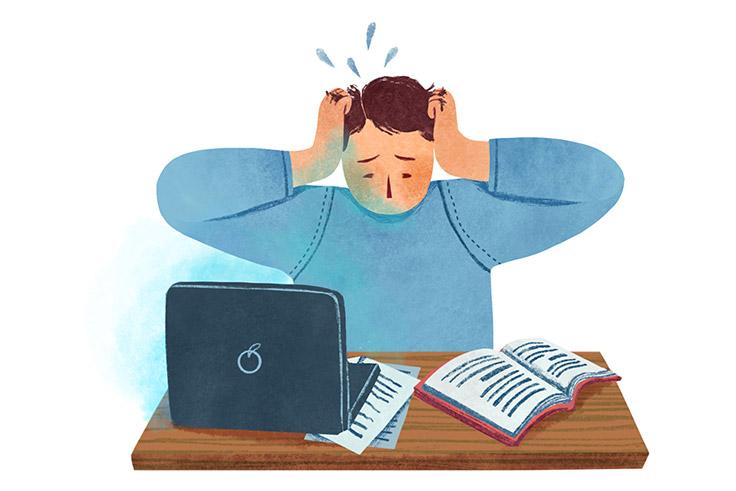If you’ve ever found yourself mindlessly adding items to your online shopping cart after a particularly rough day, you’re definitely not alone. For many millennials, stress and spending seem to go hand in hand. This phenomenon, often referred to as “stress-spending,” has become a common way to cope with the pressures of modern life. But here’s the good news: breaking this cycle is entirely possible. In this article, we’ll dive into the stress-spending connection and explore some practical strategies that can help you take control of your finances and your mental well-being. So, grab a cup of coffee, settle in, and let’s get started!
Understanding the Stress-Spending Cycle
It’s common nowadays to feel stressed by work, finances, or personal life. Often, this stress can lead us to spend money as a quick fix. Why does this happen? Spending often brings immediate pleasure or relief, like buying a new gadget, dining out, or indulging in some retail therapy. Unfortunately, these purchases can lead to financial strain, creating a vicious cycle of stress and spending.
To break this cycle, it’s important to recognize the signs and adopt healthier coping mechanisms. Consider these alternatives:
- Meditation: Taking a few minutes daily to clear your mind can significantly reduce stress.
- Exercise: Physical activity can be a great way to release built-up tension.
- Budgeting: Setting a clear budget helps you manage finances better and reduces the urge to spend impulsively.
Below is a simple comparison of how stress-spending affects daily life versus healthier stress management techniques:
| Stress-Spending | Healthy Management |
|---|---|
| Quick gratification but temporary relief | Long-lasting mental peace |
| Increased financial worries | Better control of finances |
| Emotional rollercoaster | Stable emotional well-being |
Why Millennials Are More Prone to Stress Spending
Millennials, who grew up during the rise of technology and social media, often face unique pressures that can lead to stress-induced spending. Social media gives everyone a front-row seat to others’ highlight reels, making it easy to feel behind in life. Seeing friends travel, dine out, or buy the latest gadgets can create a sense of inadequacy. This results in a phenomenon called “FOMO” (Fear of Missing Out), driving many to make purchases they can’t really afford just to keep up. Additionally, the convenience of online shopping and targeted ads doesn’t make resisting temptation any easier.
Modern work culture also contributes to financial stress. Millennials frequently deal with job instability, long hours, and the pressure to constantly hustle. This can result in emotional exhaustion, prompting many to seek quick fixes through retail therapy. Here’s a snapshot of some common stress triggers and their spending tendencies:
| Stress Trigger | Typical Purchases |
|---|---|
| Work Stress | Takeout, Convenience Items |
| FOMO | Fashion, Gadgets |
| Social Media Pressure | Travel, Lifestyle Products |
To manage stress spending, millennials can try several strategies:
- Set real financial goals: Prioritize saving for important milestones like a house or emergency fund.
- Create a budget: Track expenses and set limits on non-essential purchases.
- Practice mindfulness: Engage in activities that reduce stress, like yoga or journaling, instead of resorting to shopping.
- Limit social media use: Avoid comparing your life to others by taking breaks from social platforms.
Practical Tips for Building Healthy Financial Habits
Stress can often lead to impulsive spending behaviors that wreak havoc on your finances. To help curb this, start by identifying your stress triggers. Is it work? Relationships? Once you know what’s causing the stress, you can take steps to manage it without turning to retail therapy. Here are some practical tips to help you stay on track:
- Create a Budget: Make a monthly budget and stick to it. Use budgeting apps to easily track your expenses.
- Track Your Spending: Keep a daily record of what you spend. Knowing where your money goes can be eye-opening.
- Set Financial Goals: Having clear goals can give you a sense of purpose and motivation.
- Avoid Temptations: Unsubscribe from marketing emails and unfollow brands on social media to avoid impulsive buys.
- Emergency Fund: Build an emergency fund to cover unexpected expenses, reducing financial stress.
An emergency fund is crucial as it can prevent you from falling into a cycle of debt. Here’s a quick breakdown to help you figure out how much you might need to save:
| Expense | Monthly Amount | 3-Month Total |
|---|---|---|
| Rent/Mortgage | $1,200 | $3,600 |
| Utilities | $200 | $600 |
| Groceries | $400 | $1,200 |
Mindful Spending Techniques to Curb Emotional Purchases
It’s easy to fall into the trap of buying things we don’t need when we’re feeling down or stressed. To help combat this, here are some mindful techniques that can help you make better spending choices:
- Pause Before Purchasing: When you find something you want to buy, take a moment to think if you really need it. Creating a waiting period, like 24 hours, can help you decide if the purchase is necessary.
- Set a Budget: Establish a clear spending plan. Knowing exactly how much you can spend on non-essentials can prevent you from going overboard.
- Identify Triggers: Recognize the emotions that lead you to make purchases. Are you buying because you’re sad, bored, or anxious? Understanding your triggers can help you manage them better.
Another effective way to manage emotional spending is by using tracking tools:
| Tool | Description |
|---|---|
| Expense Tracker Apps | Keep a log of your daily spending to better understand where your money goes. |
| Spending Journals | Write down every purchase and reflect on the reason behind it. This can help identify patterns in emotional spending. |
| Financial Coaches | Sometimes, talking to a professional can provide personalized strategies to curb unnecessary spending. |
Q&A
### Q&A: Understanding the Stress-Spending Connection and Tips for Millennials to Break the Cycle
Q1: What is the “stress-spending connection”?
A1: The “stress-spending connection” is basically when stress leads us to spend more money, often impulsively. It’s like when you have a rough day and find yourself buying stuff online or hitting up your favorite store. The act of buying gives a temporary mood boost, but it can add up and lead to financial stress later on.
Q2: How common is stress-spending among millennials?
A2: Super common! Many millennials face financial pressures, job uncertainties, and life transitions, making them prone to stress-spending. A lot of people don’t even realize they’re doing it until they check their account or credit card statement and realize they might have gone overboard.
Q3: Why does spending make us feel better?
A3: Spending can release dopamine, the “feel-good” chemical in our brain, which is why shopping can give us a temporary high. It’s a quick fix that distracts from whatever stress or discomfort we’re experiencing at the moment.
Q4: What are some signs that you’re stress-spending?
A4: Some signs include buying things you don’t need, feeling a rush of excitement when you shop, immediately regretting purchases, or hiding your spending habits from others. If your spending patterns are causing financial strain, that’s a big red flag too.
Q5: Any tips for avoiding stress-spending?
A5: Absolutely! Here are a few ideas:
- Recognize triggers: Keep a journal to track what situations or feelings lead you to spend impulsively.
- Find alternatives: Engage in activities that reduce stress without involving spending—like exercise, reading, or talking to a friend.
- Set a budget: Give yourself a monthly spending limit and stick to it. Use apps to help keep track if that makes it easier.
- Wait it out: If you find something you “must have,” wait 24 hours before buying it. Often, the urge will pass.
- Seek support: If stress or spending is overwhelming, consider speaking with a therapist or financial advisor.
Q6: Does this mean all shopping is bad?
A6: Not at all! Shopping and treating yourself isn’t inherently bad. The key is making mindful, intentional choices rather than using spending as a way to cope with stress. By being aware of your habits and triggers, you can enjoy shopping without it negatively impacting your finances.
Q7: Are there tools or resources specifically for millennials to manage stress and spending?
A7: Definitely! There are plenty of apps like Mint or You Need A Budget (YNAB) for financial tracking and planning. Also, meditation apps like Headspace can help manage stress. Some online communities and forums offer support and advice specifically geared toward millennials dealing with these issues.
Q8: Any final thoughts for millennials feeling trapped in the stress-spending cycle?
A8: Remember, you’re not alone! A lot of people struggle with this, but recognizing the pattern is the first step. Take small steps towards healthier habits, and don’t hesitate to reach out for help if you need it. Breaking the cycle is totally possible with some effort and support.
In Conclusion
And there you have it—the ins and outs of the stress-spending cycle and some solid strategies for millennials to break free. Remember, understanding why we spend when we’re stressed is the first step toward making healthier financial choices. Whether it’s picking up a new hobby, seeking support, or just being more mindful of our spending triggers, every little bit helps. So next time stress starts whispering sweet nothings in your ear, you’ll be ready with a plan that keeps your wallet—and your peace of mind—intact. Happy saving!


